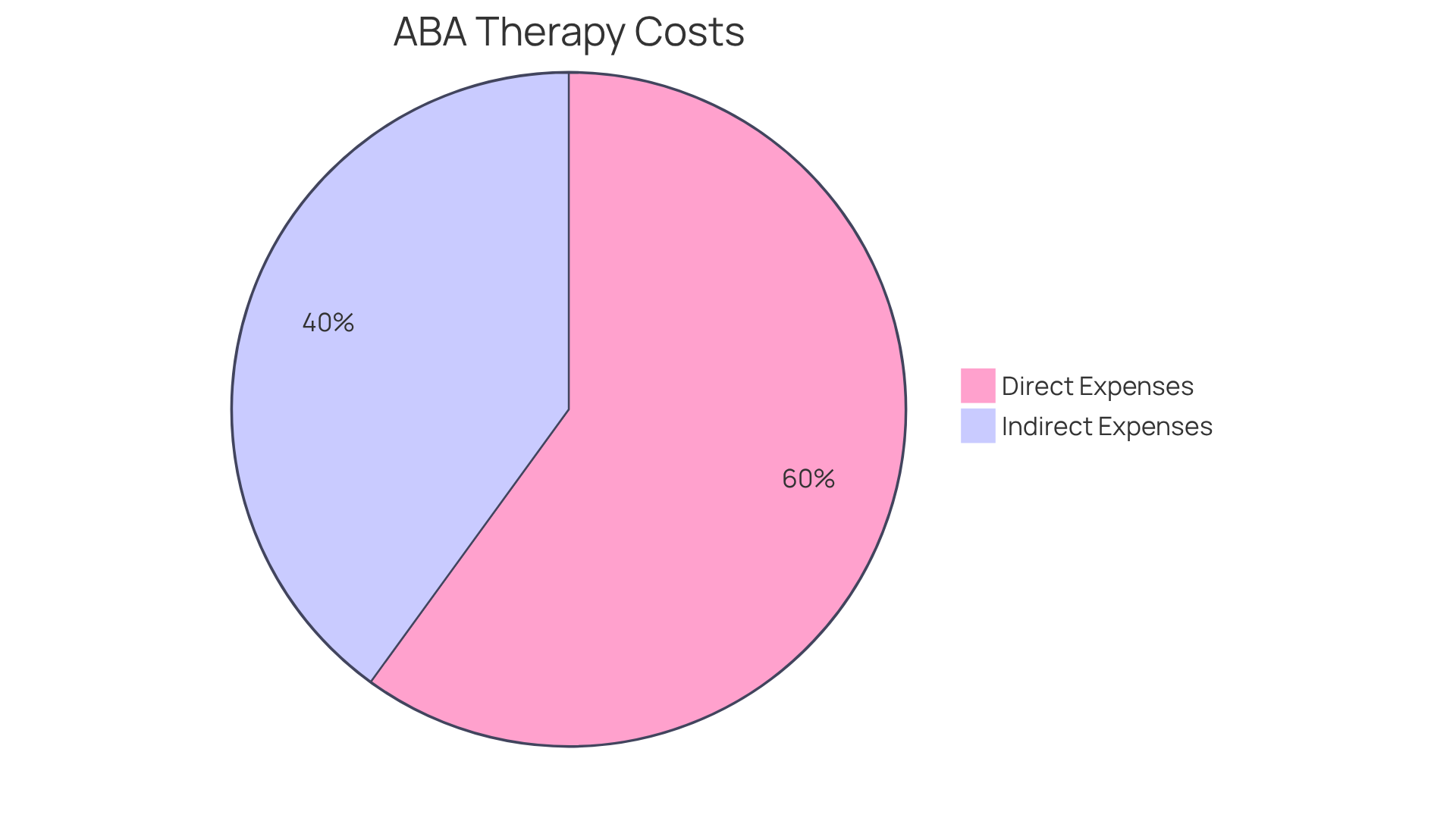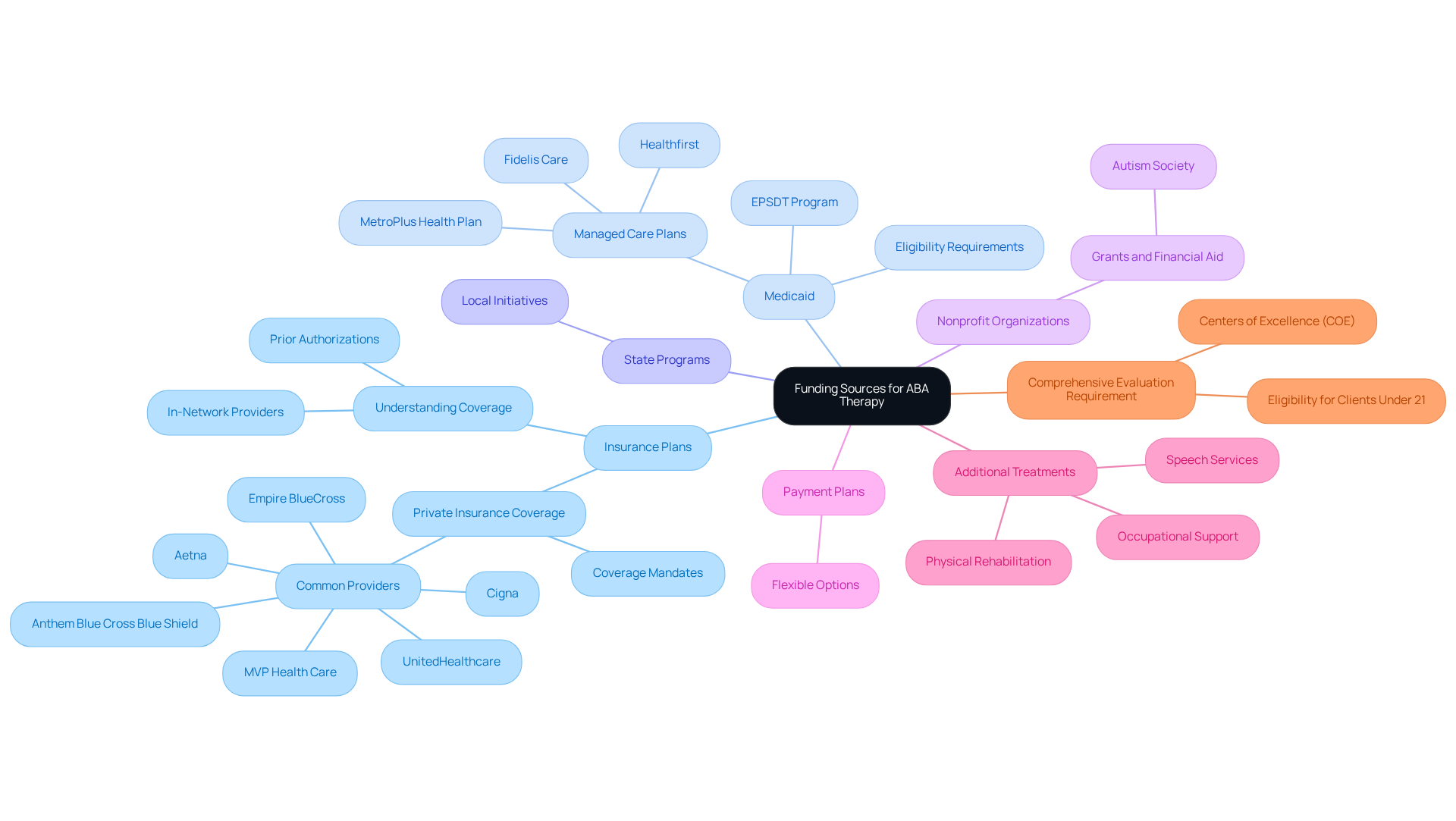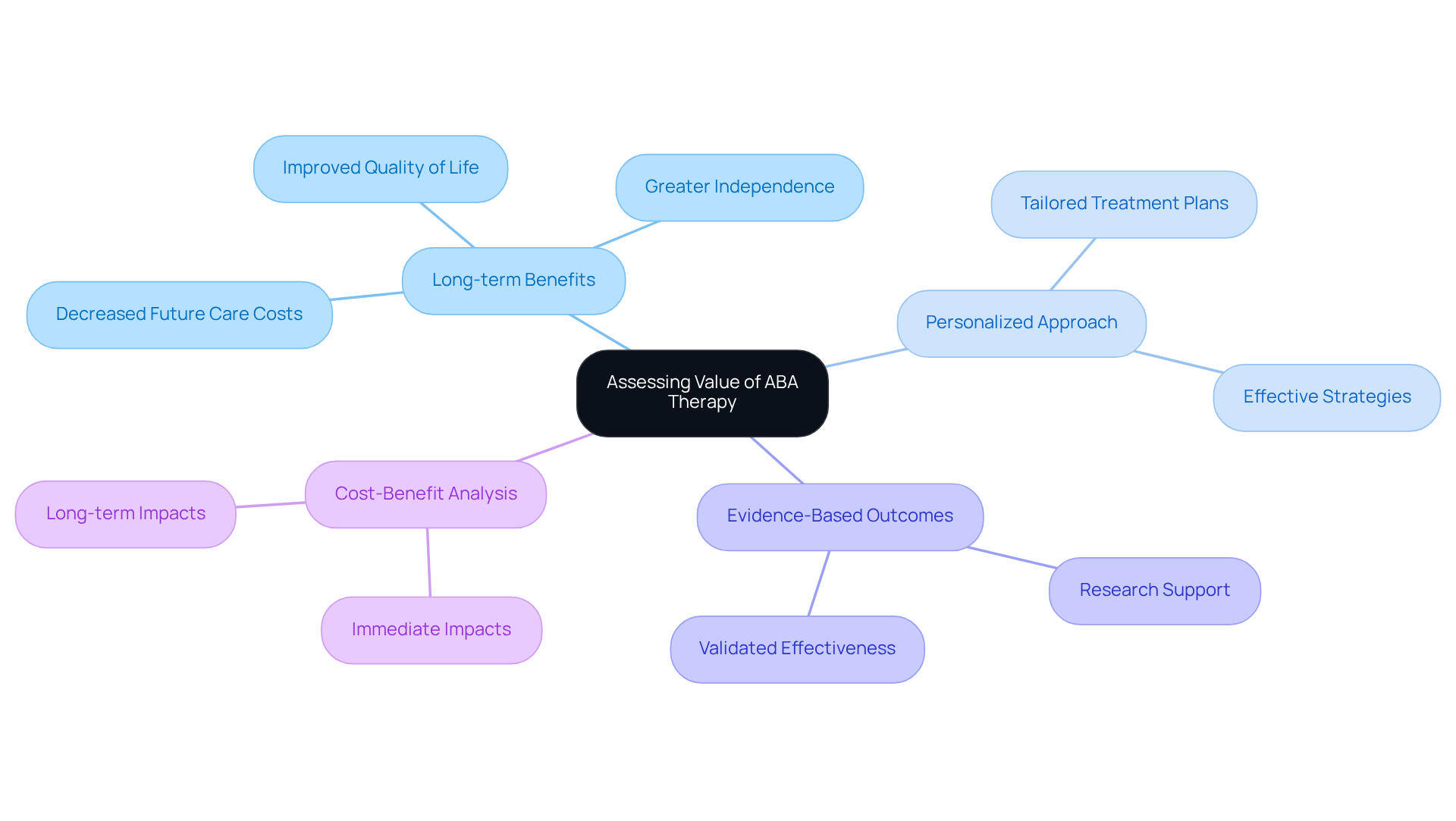September 28, 2025

The article examines the cost of ABA therapy, emphasizing critical factors that influence pricing and available funding sources. Costs typically range from $120 to $250 per hour, contingent upon aspects such as location, provider qualifications, and insurance coverage. Additionally, it outlines various financial assistance options, including:
These options are designed to support families in managing these expenses.
The increasing demand for Applied Behavior Analysis (ABA) therapy highlights its essential role in supporting individuals with autism spectrum disorder (ASD). However, the financial implications can be overwhelming for many families.
With projected hourly costs ranging from $120 to $250 by 2025, it becomes crucial to understand the factors influencing these expenses—from location and provider qualifications to insurance coverage.
How can families navigate this intricate financial landscape to ensure their loved ones receive the necessary care while effectively managing costs?
The demand for Board Certified Behavior Analysts (BCBAs) is projected to increase by 25% by 2026, underscoring the critical need for effective Applied Behavior Analysis (ABA) interventions. ABA is a scientifically validated method designed to enhance specific behaviors, particularly in individuals with autism spectrum disorder (ASD). This approach employs a variety of techniques and principles to foster meaningful and positive behavioral changes.
The financial landscape associated with the ABA therapy cost is intricate, encompassing both direct expenses—such as treatment sessions, evaluations, and essential materials—and indirect expenses, including travel and potential time away from work for relatives. In 2025, households may encounter ABA therapy costs ranging from $120 to $250 per hour for counseling sessions, influenced by location, provider expertise, and the intensity of services required. Navigating insurance coverage remains a significant challenge for many families, as it can greatly affect out-of-pocket expenses.
Real-world examples illustrate the financial implications of ABA treatment. A case study titled "How ABA Therapy Supports Children In Following Group Instructions" reveals that while the initial investment may be substantial, the long-term benefits—such as improved social integration and learning outcomes—can justify the costs. Similarly, another study, "How ABA Practices Encourage Healthy Competition Skills," demonstrates how ABA methods promote healthy competition skills, enhancing children's social interactions and overall development.
Understanding the is vital for families and professionals, as it directly impacts treatment options and budgeting for care. As the demand for BCBAs continues to rise, the importance of informed financial planning in accessing quality ABA services cannot be overstated. Are you prepared to navigate these financial challenges and ensure the best outcomes for your loved ones?

Several factors influence the ABA therapy cost associated with treatment. Understanding these elements is crucial for families .
By considering these factors, families can make informed decisions regarding the cost of ABA therapy and its associated expenses.

Families seeking financial assistance for ABA therapy have access to a range of funding sources, including:

When evaluating ABA therapy cost, it is essential to assess its value and effectiveness in relation to the treatment provided. Research consistently shows that ABA treatment can significantly enhance behavior, communication, and social skills for individuals with ASD. Families should consider the following:

Understanding the costs associated with ABA therapy is crucial for families navigating the complexities of treatment options. As the demand for effective interventions grows, so does the need for clear insights into financial considerations. This article underscores the importance of being informed about the various factors influencing ABA therapy costs, from location and provider qualifications to insurance coverage and session frequency.
Key insights reveal that the financial landscape of ABA therapy is multifaceted, with both direct and indirect expenses playing significant roles. The potential for long-term benefits, such as improved social skills and independence, often justifies the initial investment. Additionally, various funding sources, including insurance, Medicaid, state programs, and nonprofit organizations, provide essential support for families seeking assistance. Understanding these avenues can empower families to make informed decisions and advocate for their children’s needs effectively.
Ultimately, the value of ABA therapy extends beyond its costs. By assessing the effectiveness of treatment and weighing potential long-term advantages, families can ensure that their investments align with their goals for their children. It is vital to remain proactive in exploring funding options and understanding the financial landscape to secure the best possible outcomes for individuals with Autism Spectrum Disorder.
What is ABA therapy?
Applied Behavior Analysis (ABA) therapy is a scientifically validated method designed to enhance specific behaviors, particularly in individuals with autism spectrum disorder (ASD). It employs a variety of techniques and principles to foster meaningful and positive behavioral changes.
What is the projected demand for Board Certified Behavior Analysts (BCBAs)?
The demand for Board Certified Behavior Analysts (BCBAs) is projected to increase by 25% by 2026.
What are the direct and indirect costs associated with ABA therapy?
Direct costs include treatment sessions, evaluations, and essential materials, while indirect costs may encompass travel and potential time away from work for relatives.
What are the expected costs for ABA therapy sessions in 2025?
In 2025, households may encounter ABA therapy costs ranging from $120 to $250 per hour for counseling sessions, influenced by factors such as location, provider expertise, and the intensity of services required.
Why is navigating insurance coverage a challenge for families seeking ABA therapy?
Navigating insurance coverage can be a significant challenge for many families, as it greatly affects out-of-pocket expenses associated with ABA therapy.
What are some long-term benefits of investing in ABA therapy?
Long-term benefits of ABA therapy may include improved social integration and learning outcomes, which can justify the initial investment in treatment.
How does ABA therapy promote healthy competition skills in children?
ABA methods encourage healthy competition skills, enhancing children's social interactions and overall development.
Why is understanding the cost of ABA therapy important for families and professionals?
Understanding the cost of ABA therapy is vital as it directly impacts treatment options and budgeting for care, making informed financial planning essential for accessing quality ABA services.
Our expert recruitment strategies and AI-driven sourcing ensure that you receive top-notch candidates quickly, without compromising on quality. Whether you’re looking for BCBAs, Clinical Directors, or RBTs, we’ve got you covered.